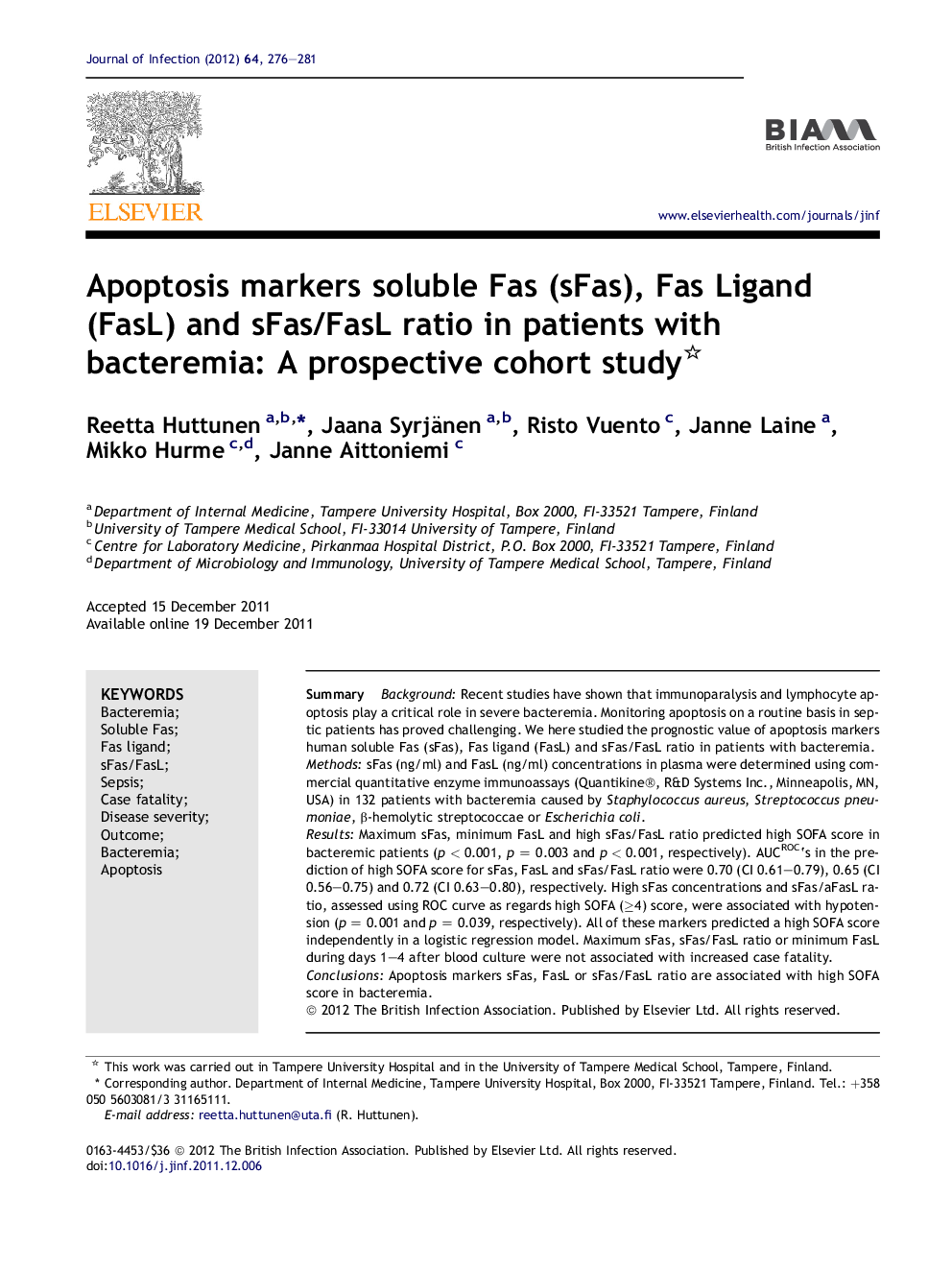| Article ID | Journal | Published Year | Pages | File Type |
|---|---|---|---|---|
| 3375023 | Journal of Infection | 2012 | 6 Pages |
SummaryBackgroundRecent studies have shown that immunoparalysis and lymphocyte apoptosis play a critical role in severe bacteremia. Monitoring apoptosis on a routine basis in septic patients has proved challenging. We here studied the prognostic value of apoptosis markers human soluble Fas (sFas), Fas ligand (FasL) and sFas/FasL ratio in patients with bacteremia.MethodssFas (ng/ml) and FasL (ng/ml) concentrations in plasma were determined using commercial quantitative enzyme immunoassays (Quantikine®, R&D Systems Inc., Minneapolis, MN, USA) in 132 patients with bacteremia caused by Staphylococcus aureus, Streptococcus pneumoniae, β-hemolytic streptococcae or Escherichia coli.ResultsMaximum sFas, minimum FasL and high sFas/FasL ratio predicted high SOFA score in bacteremic patients (p < 0.001, p = 0.003 and p < 0.001, respectively). AUCROC's in the prediction of high SOFA score for sFas, FasL and sFas/FasL ratio were 0.70 (CI 0.61–0.79), 0.65 (CI 0.56–0.75) and 0.72 (CI 0.63–0.80), respectively. High sFas concentrations and sFas/aFasL ratio, assessed using ROC curve as regards high SOFA (≥4) score, were associated with hypotension (p = 0.001 and p = 0.039, respectively). All of these markers predicted a high SOFA score independently in a logistic regression model. Maximum sFas, sFas/FasL ratio or minimum FasL during days 1–4 after blood culture were not associated with increased case fatality.ConclusionsApoptosis markers sFas, FasL or sFas/FasL ratio are associated with high SOFA score in bacteremia.
